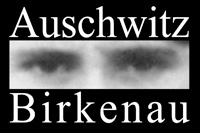




Concentration camps vs. extermination centers
Nazi German concentration camps, the biggest of which was Auschwitz, were one of many measures serving the practical realization of the extermination policy (beside, among others, executions and annihilation in prisons and various penal camps and ghettos).
The main difference between concentration camps, where prisoners of various nationalities were incarcerated, and extermination centers (Auschwitz, Treblinka, Sobibor, Belzec, Kulmhof, Majdanek), where nearly all the victims were Jewish, was in the first place the annihilation method, while the final goal – the physical elimination of the victims – remained the same (both Auschwitz and Majdanek were “atypical” extermination centers since they were organizationally and spatially combined with concentration camps under the same names). Concentration camps used as the main annihilation method hunger combined with physical exhaustion. The death of prisoners was also accelerated by other conditions of existence in the camps: the lack of proper clothes, rest and medical care, poor sanitary conditions, as well as insufficient living conditions. Unlike the victims of the extermination centers killed immediately upon their arrival in the gas chambers, the prisoners of concentration camps stayed there for shorter or longer periods (some of them managed to survive the war).
Concentration camps, being an alternative to mass executions, were a tool for the physical elimination and served at the same time the cause of disguising the crimes committed there. Since they formally, by name and organizational structure, referred to pre-war camps, where Hitler’s opponents were isolated, their denomination related, as it were, to a concept to some extent familiar to the public in Germany and other countries.
